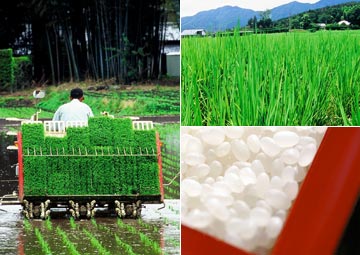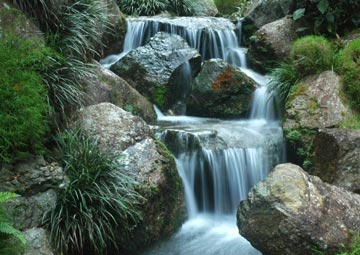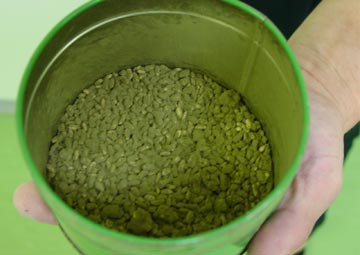Sake is made from four basic ingredients: rice, water, koji, and yeast (kobo). Each is important for its unique contribution to producing the final product.

Rice
Sake rice or sakamai is different than table rice. Its stalks are taller, its grain is larger, and its starch content is higher and more concentrated in the center of each grain. While not all sake is made with sakamai, it is used in virtually all premium sake. Grown in almost every prefecture of Japan, there are over 75 different varieties of sakamai. Of these, twelve are used most often. Many small local breweries use their local rice but there are some widely used strains such as Yamada Nishiki, Gohyakumangoku, and Miyama Nishiki, which together account for over 70% of all sake rice produced. As with wine grapes, there are specific geographic regions where certain types of sakamai grow best. These tend to be in western Japan in places such as Hyogo, Okayama, Hiroshima, and Fukuoka. However, there are exceptional sakamai grown in other parts of the country such as Akita, Niigata, and Yamagata to name several.
Each rice strain produces particular identifiable flavors (although not as clearly as wine grape varietals) and certain types have been found to work better with specific water and yeast types. It is most important to remember that while each rice type has its own “behavior” during brewing, it is largely the skill and intention of the toji (brewmaster) that determines the ultimate “personality” of the sake.

Water
Since sake is 80% water, it is essential that a brewery have a high-quality source of mineral water nearby. The quality of their water is always a source of pride among kura and great lengths are taken to explain why its origin makes it one of the secrets of their sake’s distinctiveness. Most use water from wells on their grounds as these tend to produce water of more consistent quality versus that of rivers, mountain streams, and other bodies of water (more easily affected by environmental influences).
The mineral content of the water used i.e. whether it is hard (kousoui) or soft (nansui) affects the type of sake produced. Even though Japan’s water in general is softer than most water in other parts of the globe, there are areas where softer water is concentrated such as Kyoto and Hiroshima. Sake brewed in this area tends to have a softer, more elegant character. Conversely, breweries in Kobe and Ishikawa tend to use hard water (which allows for a more vigorous fermentation) producing sake that is sharper, concentrated and more forward.

Koji
Perhaps the least familiar but most critical of the basic elements of sake is koji. Depending upon who you talk to, koji is either the heart or the soul of the sake-brewing process. Whether it be heart or soul, it is clear that koji’s role is central to the flavor and aroma of the final product.
What is koji and what is its contribution? Koji is the term for rice sprinkled and mixed thoroughly with koji-kin or aspergillus oryzae (mold spores). Its role is to break down the starch molecules of the polished rice into simple sugars so that they can be further broken down by yeast cells during fermentation.
Koji is made in a special room with a highly controlled environment called the
muro over a period of 40 to 50 hours. This room is usually off limits to all but the
kurabito, who are well-versed in this highly precise and nuanced step of the
process. When their work is completed the koji has an aroma of roasted
chestnuts and has the appearance of “frosted rice” the result of the completion of the koji-kin’s
conversion of the rice it was mixed with to simple sugar. It is now ready to be
added to a batch of steamed rice, water, and yeast called the moto or shubo,
interchangeable terms for the yeast-starter (see THE BREWING PROCESS).
Yeast
The function of yeast (or kobo) is to initiate and facilitate the fermentation process by “feeding” on the glucose molecules created from the koji mold’s affect on the rice starch in the moto. As the yeast “eats” the glucose molecules, carbon dioxide is released and alcohol (along with a whole slew of other aromatic byproducts including amino acids) is produced.
There are about a dozen yeasts that are most widely used, but the universe is upwards of fifty and counting. They go by such romantic names as #7, AK-1, #1701, CEL 19, or Sigma Beta and can impart dramatically different aromatics and flavors. Along with the other ingredients, yeast is yet another important variable for brewers to tinker with in their endeavor to produce different and more enjoyable sake.

